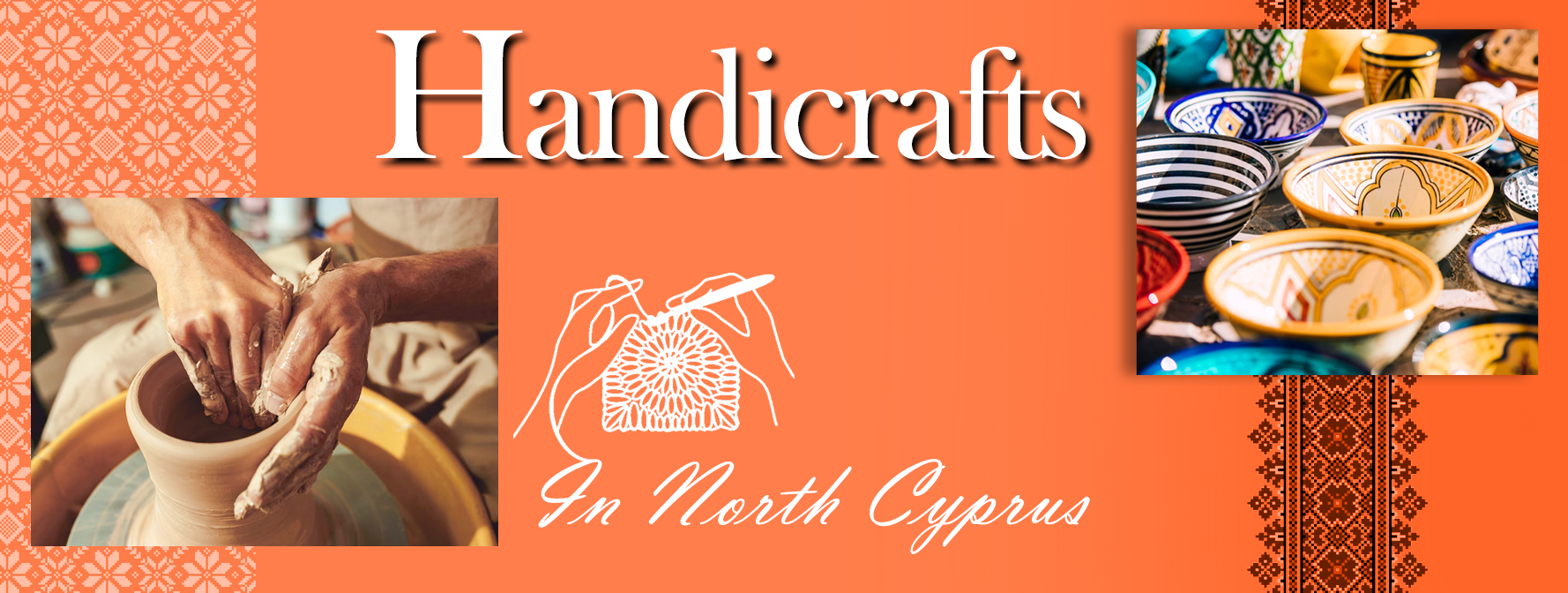
Enable Location
Handicrafts in Northern Cyprus:
Handicrafts in Northern Cyprus
Handicrafts and traditional arts are a heritage that has reached present-day humans from ancient times...
Handicrafts in Northern Cyprus:
Handicrafts and traditional arts are a heritage that has reached present-day humans from ancient times. However, despite the fact that most of these crafts are disappearing, some government bodies and private organizations concerned with these arts are making efforts to preserve, promote, and expand them in various communities.
In this regard, the Tliman Ads team has prepared the following article to preserve and identify the handicrafts and traditional arts of Northern Cyprus, in order to fulfill part of its mission in this field.
1. Silverware:
Silver and silversmithing are one of the oldest handicrafts and traditional arts of Cyprus. Tourists and travelers can acquire the most elegant and authentic silver products in Northern Cyprus, enjoy them, and carry them as souvenirs of Cyprus.


2. Embroidery and Needlework:
One of the most popular handicrafts in Cyprus is embroidery and needlework. For centuries, many villagers in Cyprus have been engaged in weaving the most elegant and beautiful embroideries and needlework for travelers and tourists. Cypriot mothers, like mothers in other traditional countries, always strive to have various types of embroideries in their trunks for their daughters. According to the culture of old Northern Cyprus, a girl who can prepare and create all her own embroideries can consider marriage.
One of the beautiful and colorful types of embroidery is working with linen fabrics on circular wooden frames, known as "kasnak" in Persian. The fabric is tightly secured on the frame, and then the overall design is embroidered with brown or French black silk threads.
Knowing this point about the name of traditional embroidery in Northern Cyprus adds to its charm. These embroideries are known as "hesap," which means "calculation" in English. They are called so because each thread is counted one by one when decorating them with various patterns.
Another interesting fact about Cypriot embroideries is that after visiting Cyprus in 1481, Leonardo da Vinci took these embroideries with him to the Milan Cathedral. It is said that the famous composer Vivaldi was also greatly inspired by embroidered designs on girls' skirts to create his own music.
It's worth noting that in embroideries sewn on bags and other items, each village has its own specialized design pattern. For example, women in one village only embroider stars, while in another village, only rivers are sewn.



3. Straw Weaving:
Straw weaving is another traditional art of the people of Northern Cyprus. The vibrant and cheerful designs of woven straw, which can be easily seen hanging from shops and restaurant walls throughout the country, capture your attention.
Straw weaving in Northern Cyprus is a unique art because each weaver has their own specific weaving pattern and they weave straw according to their own taste. Flat trays along with delicate bread baskets and lidded jewelry boxes are made from a special type of straw, while larger baskets are made from bamboo.

4. Silk Artworks:
Until recently, every Turkish Cypriot family had the skill of harvesting valuable silk cocoons and weaving silk fabrics by transforming the cocoons into threads. Unfortunately, the silk fabric trade in Northern Cyprus has declined due to foreign competition and industrialization. However, by producing decorative items from silk cocoons, a part of this fascinating industry has remained.
Today, silk cocoons are also used in fabric and clothing decoration in Northern Cyprus. It's interesting to note that the color of the cocoons varies in different countries. For example, the cocoons in Turkey are white, but in Cyprus, they are yellow.

5. Yemeni Scarf (Traditional Headscarf):
Yemeni scarves, adorned with intricate decorations, were previously widely worn by Turkish Cypriot women as a symbol of beauty. Originally, these scarves represented wealth and power.
The scarves were woven from delicate threads and then adorned with beautiful and intricate designs of leaves, branches, and flowers, which were wrapped around the head.
It's interesting to note that many elderly women in small towns of Northern Cyprus still wear this traditional headscarf.

6. Chairs Made of Reed:
In many handicraft shops, you can find chairs made of reed. Reed weaving has been highly popular in Northern Cyprus for a long time.
These miniature woven chairs are intricately crafted, lightweight, and durable. They continue to be highly popular among Turkish Cypriot families.

7. Linen Weaving:
Linen weaving is one of the traditional crafts that is at risk of extinction. It involves weaving linen fabrics in various colors, both multicolored and solid-colored. Silk, cotton, and linen fibers are used in the weaving of these fabrics. This art form has a history of 700 years, and the knowledge and skills have been passed down from mothers to daughters. This craft and the style of these fabrics have always been favored by kings and the wealthy.

The Tliman Ads group hopes to have contributed to the preservation and recognition of the traditional crafts (handicrafts) of Northern Cyprus through the collection and presentation of the above information. The group strives to fulfill its mission in the areas of technological advancement, innovation, and cultural awareness to bring the beauty and culture of Northern Cyprus to fruition in the best possible way.